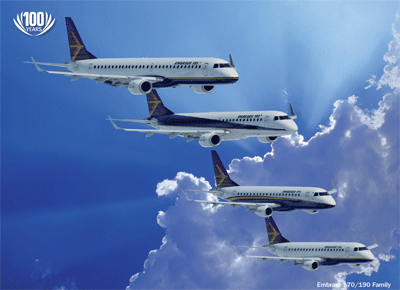Growing demand for 50-seat regional jets in non-traditional markets such as Asia and Latin America will help to “compensate” for the drop-off in business in North America, a top Embraer executive reports.
“Unlike old times, the relevance of the North American [50-seat] market is reducing,” said executive VP commercial aviation Mauro Kern during a press briefing yesterday at the airframer’s headquarters in Sao Jose dos Campos, Brazil.
The US system, in particular, faces some potentially serious challenges. In addition to a difficult operating environment – coloured by sky-high fuel costs – the seemingly positive relationship enjoyed in the past by majors and regionals appears to be strained.
 |
|---|
US regional airline firm Mesa Air Group has filed a lawsuit against Delta Airlines following the legacy carrier’s announcement that it will drop a contract with Mesa unit Freedom Airlines for the operation of Embraer E-145s. A total 34 aircraft are affected by the termination.
This follows a lawsuit filed by Bombardier CRJ operator SkyWest in which the Utah-based company claimed Delta withheld certain funds owed its regional subsidiaries Atlantic Southeast Airlines (ASA) and SkyWest Airlines.
While not addressing these developments, Kern says Embraer will pay close attention to the financial health of US airlines and how this will impact the US fleet.
One factor that could play an important role in the pace of 50-seat replacement in the USA is pilot contracts, which contain artificial scope clause constraints.
A few years ago, new pilot accords at US mainline carriers paved the way for more 70-plus-seat flying by their regional affiliates but effectively quashed management’s hopes of breaking through scope clause restrictions that prevented the outsourcing of 100-seat aircraft. With a few exceptions, a new boundary was set at the 76-seat level.
Some of the pilot deals that were not reworked as part of prior US mainline carrier restructuring efforts are now up for renegotiation, including at American Airlines. Should more mainline pilots accept the operation of larger regional jets by regionals, replacement of 50-seaters with bigger aircraft could speed up, says Kern.
This could also open the door for Embraer to place more larger-sized E-Jets in the US fleet.
“Major progress happened in times of crisis that opened the scope clauses for bigger airplanes,” notes Kern. And a number of potential orders for aircraft in the 100-seat range are already up for grabs, including Northwest Airlines’ planned replacement of its remaining aged McDonnell Douglas DC-9s.
Kern also points out that US operators will not be able to replace huge numbers of 50-seaters all at once. Embraer sees a “balance” of 50-, 70- and 90-seaters in the US fleet occurring “over time”. However, 50-seaters will remain the backbone of the US hub feeding system, says Kern.
Meanwhile, markets such as Mexico - which now supports a fleet of 44-50-seaters, mostly Embraer 145s - are offsetting the reduction in big North American and European deals.
China also offers “huge potential” for growth, says Kern as it needs aircraft that can fly long, thin routes.
Embraer, which has a Chinese joint venture, is “working very seriously in the Chinese market”.
Source: FlightGlobal.com



















